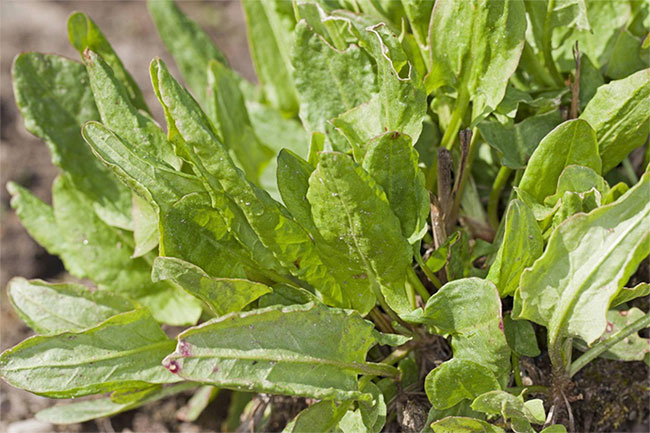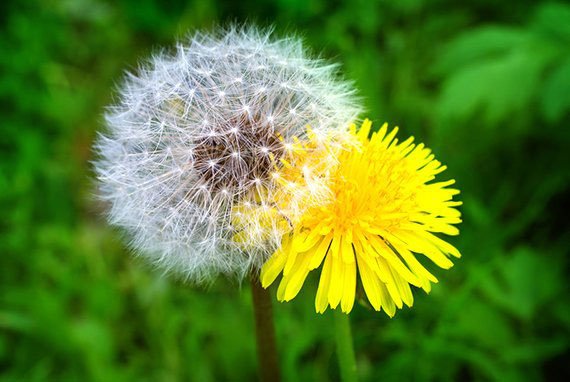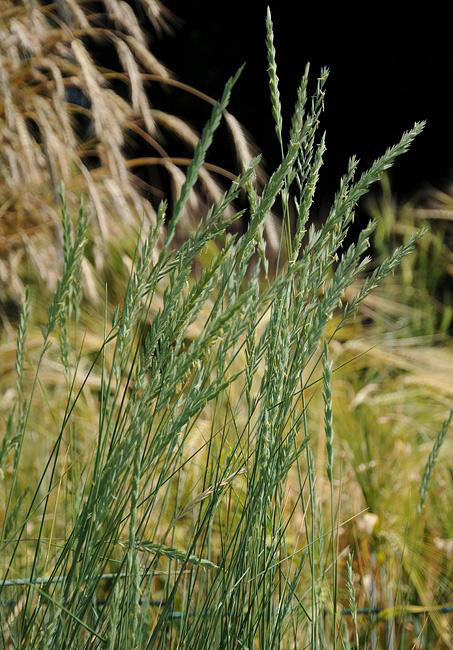8 types of weeds thought 'impermanent' were incredibly valuable
There are weeds growing everywhere, wisely used to become the most valuable food or medicine!
The incredible value of weeds growing along roadsides
1. Sauerampfer (also called Sorrel in English, also known as tamarind tree, chit chit)

This is a specialty spice in French cuisine with a soft, 20 cm-long green leaf, which is rich in vitamin C. It often grows on wet meadows, gaps in forests, roadsides or even in its own garden. friend. Medieval sailors in Europe often used this "grass" for salads, soups, or made into sauces or eaten directly with fish. Sauerampfer (tamarind tree) specifically prevents scurvy (subcutaneous bleeding due to lack of vitamin C). In addition, it also contains vitamin A, iron, magnesium and potassium which help support digestion, purify the blood and cure skin diseases.
2. Dandelion

Dandelions often grow on meadows and sunny, light fields. It is high in vitamin C, vitamin A, K, and magnesium and provides 10% of the calcium for the human body. Dandelion is believed to have anti-inflammatory and stimulating appetite, metabolism and digestion, purify the liver, treat diabetes, rich in antioxidants, provide plenty of fiber, diuretic, prevent Urinary tract infections. We can use the roots and flowers to cook tea, use the stems to make a sauce combined with coriander, the leaves can be used to make salads, or spices for pasta and seafood.
3. Climbing grass

Creeper grass often grows weeds in the grasslands, on the dike banks, abandoned lands, the wall edges . Few people think that climbing grass contains vitamins A and B, silica (chemical compound is very good for the skin) , saponin (a natural glycosyd common in many plants, especially ginseng), potassium and iron. Vines grass roots can be ground into a spice powder for food, or cooked into a diuretic drink, anti-inflammatory, purifying the body.
4. Nettle

Nettle is a shrub usually grown in fertile soils rich in nitrogen and nutrients. Nettle leaves and stems are very nutritious because they contain five times more calcium than kale and more vitamin C, vitamin A, magnesium, iron and phosphorus than spinach. Nettle has a diuretic effect and is therefore considered a cure for bladder infections. In addition, nettle is also found in medicines to treat high blood pressure, allergic rhinitis, physiological weakness . Nettle extract can be applied directly to the skin to help reduce joint pain, muscle pain, improve Toned of muscle tissue. The nettle leaves can be eaten directly, mixed with salad, served with flat noodles or cooked in soups with potatoes, fish, meat or even added to pancakes.
5. Chickweed licorice grass

Chickweed (Stellaria media) is an extremely healthy weed with flowers in the Carnation family, often growing on abandoned fields or roadside. Chickweed is eaten cooked or eaten as a salad, which is especially delicious when mixed with fish or asparagus with some lemon juice, oil, salt and pepper.
Chickweed usually blooms around May with small white petals. It is up to 50 cm high, fragile with green herbaceous, rich in vitamins A, B and C, and Omega 6 fatty acids. Since ancient times it has been used as an ointment for topical or topical remedies. Itchy skin conditions. In addition, it is used in the treatment of cough, rheumatoid arthritis, psoriasis, stomach ulcers and as a "blood cleanser". Chickweed has interesting historical and cultural connections. It is one of the seven herbs used to cook porridge in the spring in Japan.
6. Vegetable or weed Giersch (roughly translated as yawning vegetables)

Giersch often grows on every road, edge of the field, even countless in the garden. It contains abnormally high vitamin C, high in potassium, iron and other minerals. Giersch mainly boosts immunity and avoids dehydration. It has a hybrid taste of carrots and parsley, the leaves are often used as a spice for dairy, mayonnaise, cream soups and other dishes.
7. Gundermann (also known as chrysanthemum, Yang hymen) Gundermann

Yarrow is usually grown on poor roads, grasslands, embankments, or on gravel. It contains a lot of essential oils, bitter substances, proteins, resins, inulin (important substances for the digestive system, resistance .), potassium and copper.
Since ancient times, ancient Greeks have used this herb to treat skin wounds. Yarrow flowers and leaves used to eat and make tea have a calming, relaxing effect, reducing the headaches and migraines associated with the weather.
Fresh Yarrow leaves are used to stop bleeding wounds, treat digestive problems, treat fevers, reduce menstrual bleeding, stimulate circulation and cure toothache. In Chinese medicine, it is believed that Yarrrow can affect the kidneys, spleen and energy channels in the body. Young leaves are used to make both in herbal salt, added to flour or herb butter. Flowers are used in salads or added to lemonade to make drinks very cool.
8. Gundermann grass

This grass usually grows on the edge of the forest and on wet meadows, featuring purple flowers. It contains bitter taste and many essential oils, so it is often used as a condiment or processed into sauces to boil or sprinkle on crepes. This weed is traditionally one of the nine herbs that must appear on the table before Easter.
- Beetle - a solution to kill weeds
- The method of killing weeds does not use chemicals
- Very poisonous grass spread like wildfire
- See foreign farmers killing weeds with ... sprayers
- Check out Zootopia right away, you will find 4 incredibly valuable start-up lessons there
- Detects 8 types of viruses that cause cervical cancer
- Painting by thought
- Why do people have different blood types?
- Use thought to control the item
- Transform CO2 into a valuable resource
- The secret of the ancient tombs was unearthed in Vietnam
- 10 most rare and precious stones in the world
 Why do potatoes have eyes?
Why do potatoes have eyes? 'Tragedy' the world's largest carnivorous life: Death becomes ... public toilet
'Tragedy' the world's largest carnivorous life: Death becomes ... public toilet Tomatoes were once considered 'poisonous' for 200 years
Tomatoes were once considered 'poisonous' for 200 years Detecting microscopic parasites on human face
Detecting microscopic parasites on human face